
Why German Torpedo Boats in WW2 ?
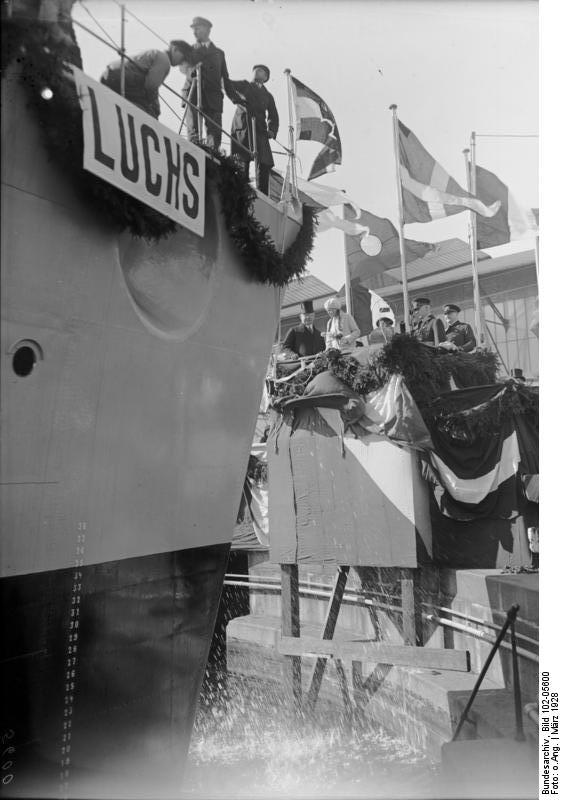
Before WW2, only four nations signatory of the Washington Treaty considered the torpedo boats as a way to go around some limitations in tonnage for destroyers, although this category was largely seen as obsolete after the great war. This “revival” concerned in order of importance given to the category, Italy, Germany, Japan and France*. And these were only the large fleets. Alongside them, a cohort of other nations still had torpedo boats in their inventory. They were cheaper than submersibles, and still usable for narrow waters point defence. The Scandinavian Nations for example still relied on them and built some up to WW2, although motor torpedo boats were also considered and sometimes took their place.
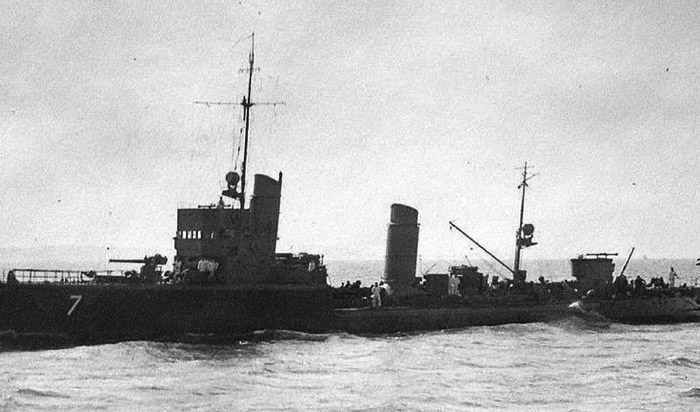
G7/T107, one of the numerous vintage WWI hochseetorpedoboote of the Kaiserlichesmarine modernized in the Reichsmarine. They were still active in WW2.
*Italy had a proficience in this time, with many modern designs and reclassed WWI destroyers to boot, to compensate for destroyer tonnage seen as unsufficient, Japan had only the Tomozuru and Otori class built in 1933-37, but replaced by escorts later, while France only developed the Melpomène (1935) and Le Fier class (1940, never completed). Both countries scrapped their torpedo boats to free tonnage or just through obsolescence. Both Japan and France stopped building torpedo boats were destroyers became the standard anyway, well before WWI. This also made sense in terms of maritime strategy. Both had either an Empire or were building one, and rather wanted a coherent fleet, priority being given to fleet destroyers.
The case of the Reichsmarine
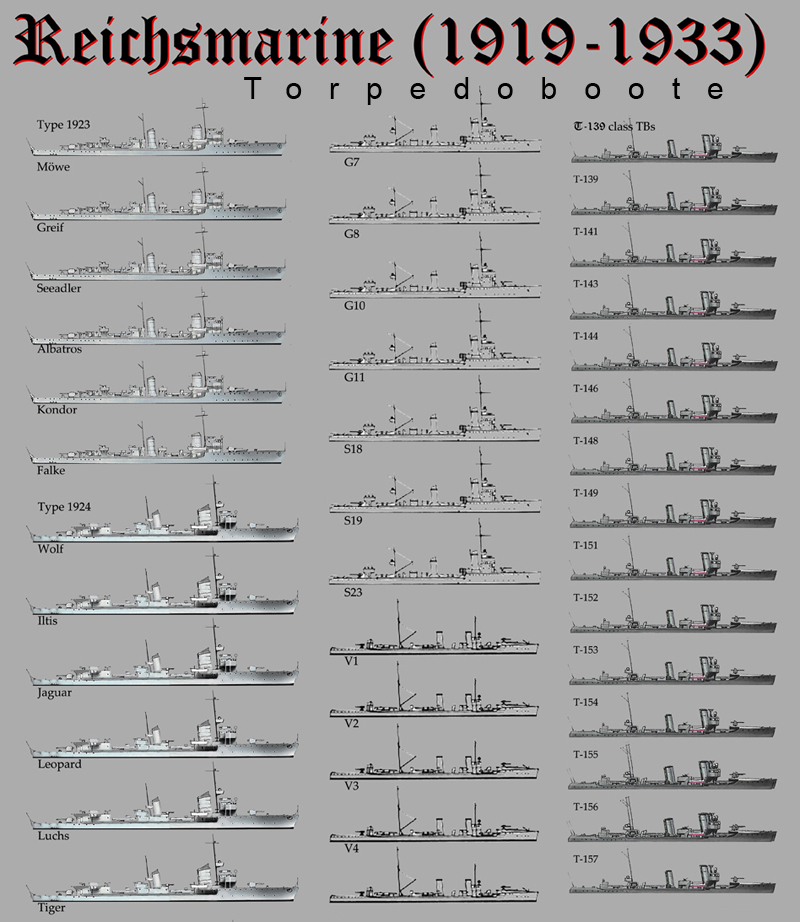
Reichsmarine’s torpedo boat prior to 1935. On top, the torpedo boats and newly built destroyers in service
Now, of the two nations most proficient in torpedo boats, Italy was the only nation of the future axis that was bound by the Washington treaty. The allied powers which submitted Germany to the Versailles Treaty which authorized the Reichsmarine some leeway in this category since it was mostly seen as defensive, not to project power. The Versailles Treaty nevertheless restricted the new Reichsmarine by treaty to twelve torpedo boats and twelve destroyers, nothing more, with a possible replacement of vintage WW1 units plus extra decommissioned ships for cannibalization.
The first replacement programme was in reality a newly designed “destroyer” under severe tonnage limitations, the Type 1923 and Type 1924 better known as the “Raubvögel” and “Raubtiere” based on their names, birds of prey and predators. They were the first “zerstörer” laid down since 1918, and based by default on a mix of features of late WWI designs. They were however classed in the Reicshmarine Book as “torpedo boote” anyway, knowing that they were too small to compete with any contemporary designs. Naturally they were reclassed as Torpedoboote in 1935, when the first of the 1934 type destroyer was launched. The latter had twice their tonnage.
Birth of the Kriegsmarine’s T-Boote (1933-34)
1935-37 naval staff discussions
It’s with the arrival at power of Hitler and more serious funding was given to the Kriegsmarine, then the tonnage increase obtained with the Anglo-German treaty of London redefined priorities. In any case in 1935, albitious programmes were launched in several catgories: Destroyers, Cruisers, the first battleships and aicraft carriers, and a new generations or torpedo boats, of two types, the fleet torpedo boats and coastal ones. The second are essentially motor torpedo boats, the S-Boote. The first type is the object of this article. Where these ships really useful ?
The 1935 debate in the Reichsmarine, soon to be renamed Kriegsmarine and reorganized, procuring or not torpedo boats was put into consideration. The Anglo-German treaty was not signed yet, but de facto would impose on Germany the Washington Treaty conditions. Therefore, tonnage caps were imposed on destroyers, qualitative and quantitative. The 1930 London Naval Treaty had a clause that ships below 600 long tons standard displacement did not count against national tonnage limits.
This was enough for the Kriegsmarine to attempt a design a high-speed, ocean-going torpedo boat based on this 600 long tons. Italy was doing the same since 1933. And both soon realized the same: This proved to be impossible based on high-speed requirement. This forced the use of (troubesome) high-pressure boilers, half the numbers used on a regular Type 1934 destroyer for better standardization. Maintenance problems were exacerbated an even crampier machinery.
the whole concept, with the benefit of hindsight, must be considered a gross waste of men and materials, for these torpedo boats were rarely employed in their designed role.
naval historian M. J. Whitley
So Just like Italy, it was felt torpedo boats were cheap enough to be built in large quantities and perform tasks in restricted seas (in the Baltic in particular) which could free fleet destroyers for their main tasks. Destroyers were to act more agressively as screen vessels and seek combat, while torpedo boats would inherit two other roles: Convoy escort and patrol, still with the possibility of longer range attacks compared to S-Boote. Even within that frame, the Kriegsmarine still ordered a serie of dedicated “escorts”, the “F” class, also launched in 1935. They lacked torpedoes, had the same light main armament but greater emphasis on ASW weapons.
This was a standalone class as soon as it was understood the nimbler and faster R-Bootes could take at the same time the role of coastal minesweepers, minelayers and ASW vessels. The other was self-evident as submarine threat was limited, as the need of escorts. After all, Germany was nearly self-sufficient and apart communicating with Norway for the famous “steel road”, its lines of communications were not as bloated and extensive as Great Britain or France. Thus, torpedo boats being seen as more versatile to attack, and still procure the benefit of an escort, were a good in-between.



Plan Z’ torpedo Boat programme
The new torpedo boats built in the Kriegsmarine were based on Plan Z: The latter planned no less than 90 torpedo boats to be built until 1950. As stated above, they were a kind of escorts, freeing destroyers for more fleet important tasks, but keeping an attack capability. Soon, other tasks were found for them and they were equipped to lay mines, but no consideration was given at any point to ASW defence: From the 1935 to the 1941 types, none had depth charges. More emphasis was put on AA however.
The construction plan was gradual and incremental, following finances and the capabilities of German yards: From the 800-tonnes 1935 type, of which twelve vessels launched 1938-39 were just ready on time for the Norwegian campaign. The expansion was fast, as the 1939 Type reached 1,700 and 1941 type 2,000 tonnes. The latter was still conventional but now to the size of a “small” destroyer (only in comparison to German destroyer standards). The 1940 type however were complete oddballs that can’t be regarded in the this context: They were ordered in the Netherlands and reaching 2,500 tonnes fully loaded, reusing the machinery of gutted destroyers of the Tjerk Hiddes class, with a total of twelve ordered, to be fitted out in Germany. Their design was closer to standard destroyers with a forecastle and generous artillery in superfiring positions.
The first true T-Boote: 1935/37 Types
The 1935 and 1937 Types were very close in design, and formed a coherent force of 21 ships in completion when WW2 started. The initial 1935 design was as narrow and light as possible to “fit the bill” of a 600-tonner, but it was soon judged impossible to meet requirements and revised in 1936, the bar raised to 800 tonnes. By default at the time, little consideration was given to allied inspection on these programmes.
In Italy, the Spica class however realized the impossible by achieving a 600+ tonnes design, but at great sacrifice. It soon showed its limits, notably in terms of sturdiness, seaworthiness and stability. The Mediterranean has relatively comparable conditions to the Baltic, but since the German designs were supposed to go out in the north sea to attack British lines of communications from the Jade, a sturdied hull was needed, yet while trying to find any ways to reduce tonnage.
Thus, the most distinctive design point of German WW2 torpedo boats, unique compared to all other designs of the time, was the choice of a flush-deck hull.
Italian, French, Japanese torpedo boats all had a forecastle and mimicked a destroyer in many ways.
The hull had a particular shape with a renforced prow, relatively large, and slanted hull, clipper bow, to battle large waves in winter. The hull shape was a way to rationalize construction and gain weight. Still, they had a low silhouette and were pretty “wet” in most conditions.
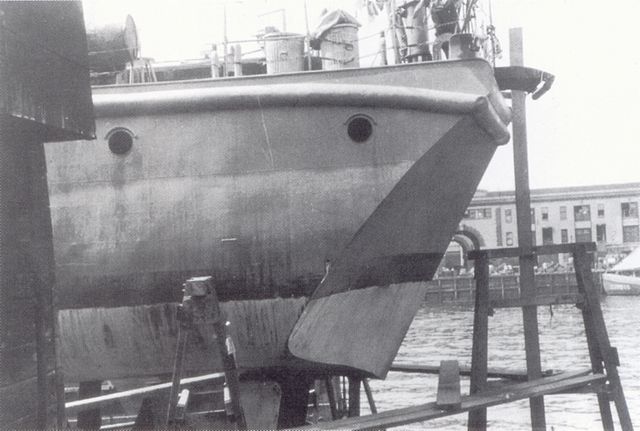
The particular semi-transom stern of T35, a Type 39.
Another particular was their armament: Main armament was standard, revolving around the 100 mm caliber, but just a single one aft, which was highly unusual, and unlike Italian designs they carried standard 21-inches (533 mm) torpedoes, for the maximal hitting power whereas armament was purely defensive. The accent was on first strike capabilities above all else, which contradicted their escort capabilities (the task they performed eventually).
Why lacking a forward gun ? It seems that due to their low freeboard, and despite their flare, a forward gun would be just sprayed to such point of being unusable. The lessons on the USN with their “flush-deckers” built in 1918-1921 was well understood.
The new wartime standard: 1939/41 Types
The design of the Type 1935/37 was definitely more suited to escort than attack, and thus, a mich larger type, reflecting the upscaling of German destroyers at the time, with some armed with 6-in guns, an enlarged and faster Type 1937 was sought after, soon called the Type 1939. They really fit the bill of Plan Z and were intended for long range operations. They were the brainchild of Grand Admiral Erich Raeder, CiC of the Kriegsmarine at the time, and not pleased with the too modest 1938B-class destroyer ordered in 1939. To compensate he wanted a 1,265 metric ton and 95-meter-long (311 ft 8 in) all-purpose torpedo boat, which specifications were written on 8 July. The idea that it could be built in larger quantities than proper destroyers. By September 1939 the shipbuilding program was reevaluated, the Type 1938B cacelled and the Type 1936A-class destroyer ordered instead. The Type 39 torpedo boat was far larger that previous types and the same high-pressure boilers but arranged into separate units (for safety, also giving them two funnels). They were alsmot equivalments to the 1938B design between their 102.5 meters (336 ft 3 in) overall, for 1,318t standard/ 1,780 metric tons deeply load and their hull was divided into 13 watertight compartments and double bottom. They ended as excellent, agile seaboats.
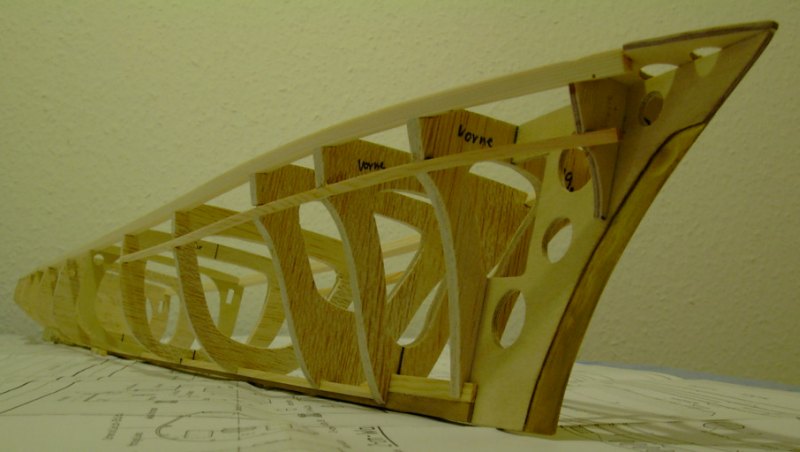
Hull shape and structure model, Type 1939
-The Type 1941 Type were a completely different matter: As the war started, Yards were soon starved of resources and personal, diverted to active army units and the Luftwaffe. One immediate effect was the outright cancellation of the Type 39 TBs with only 15 ships ordered, many never completed. It was decided later to create an enlarged version with a better propulsion machinery to reach 34 knots and adding another twin FLAK 37mm. They were, like the Type 1939, intended to take the pklace of sunken destroyers and assumed relatively similar roles.
In the end, on the 15 planned only a few were launched: T37–T42 in Schichau and later T43–T48, then T49–T51. The yeard being located in East Prussia the planned completion in 1945, soon fell through between labor shortages and the Soviet advance. All work ceased on 22 January and only three were towed further west for completion in Deschimag and Kiel but they were all captured.
Near-destroyers: 1940 Types
The transition towards a more ocean-going type saw some maturation in the concept. However they were very different:
-The Type 1940 was in all effect, practical destroyers ordered… in the Netherlands for the Dutch Navy in 1938. When the country fell in May 1940, the Germans soon captured all yards and vessels under construction were examined, documentation seized by the Kriegsmarine. These four Gerard Callenburgh class destroyers were now deprived of HNLMS Isaac Sweers, towed to be completed in UK, but Gerard Callenburgh was completed as ZH1. Philips van Almonde and Tjerk Hiddes were BU, but mist of their propulsion machinery was intact as well as some equipments, so the Kriegsmarine decided to design a ship tailored to be built in the Netherlands while recycling this now surplus material. If they were classed as torpedo boats, the Type 40 design were effectively destroyers in shape and tonnage.
In fact, using both Dutch yards and forced skilled workforce, which lacked in Germany, ambitious plans were to built no less 24 of these Type 1940, reclassed officially as Flottentorpedoboot and tasked to take the place of regular destroyers now in short supply.
However as the war went on, the enterprise looked grimer by the day and 12 were cancelled, and between sabotages and generally uncooperative workforce, and then shortages of all kind, none of these were completed before D-Day. The first three, most complete, were towed to Germany to be completed, one sank en route by Allied fighter-bombers and the last pair never completed. The remaining ones were BU in 1946.
Specifics of German WW2 Torpedo Boats
Main Guns:
12.8 cm SK/L45 C34:
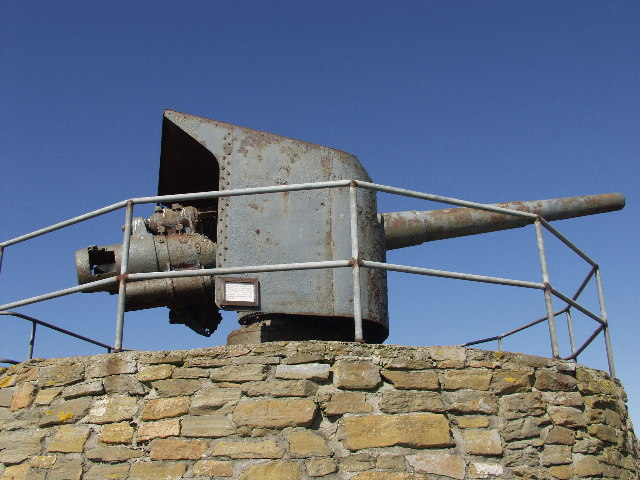
These German guns were a fairly common models, internationally classed as 5-in (127 mm) but of slighlty larger caliber. They equipped the Type 34, Type 36 and Type 36B destroyers and other vessels, but also the Leopard and Luchs after conversion. For what we are concerned they were to equip the Dutch-built Type 1940. 15–18 rpm; mv 830 mps (2,700 ft/s); range 17,400 m (19,000 yd).
105 mm (or 10.5 cm) SK/L45 C16:
These equipped the vintage but modernized T107 group and T139 group. But also the Type 1923/24 “destroyers”. These WWI vintage guns were first developed for the first generation of German dreadnoughts like the Nassau class in 1907. The late C16 type was a single pedestal mounts in open half-shield version. The wartime modification was the one use, since there were still many in storage. They elevated −10° to +30 and hard a ax range of 17.6 km (10.9 mi). They were replaced by C28 or C32 during their 1936 refit and thus the model was no longer in use but on the T107 group and older TBs.
10.5 cm SK/L55 C28:
Use on the 1923/1924 types. Some were bored out to become the 12.7 cm/45 (5″) SK C/34 used on the Leopard and Luchs only. Firing the HE – 32.4 lbs. (14.7 kg), elevating -10 +30°, range 18,860 yards (17,250 m), mv 3,035 fps (925 mps), ROF 15 rpm.
10.5 cm SK/L45 C34:
Adopted for the 1935/37 Type and Type 1939. In their improved (nR, “nachgebohrte Rorhe” or “improved drilled barrel”) version they had better performances. ROF 15 rpm, firing the HE L/4,4: 53.4 lbs. (24.2 kg) Illumination round L/4,1: 50.0 lbs. (22.7 kg). Range 16,600 yards (15,175 m), hand-operated.
10.5 cm SK/L45 L44B:
Dual purpose models adopted for the never completed Type 1941 and Type 1944. On the latter, in two twin mounts located fore and aft. These elevated up to +75° and fired 15.5-or-17-kilogram (34 or 37 lb) shell at 835 or 785 m/s (2,740 or 2,580 ft/s) depending of the type. The 17-kgs shell could land at 19,000 meters (21,000 yd) from +48°. Rate of fire was 12–14 rounds per minute and 400 rounds were carried per gun. Added to the generous lighter AA, radar warning and radar-guided FCS, both the Type 1941 and especially the Type 1944 had a considerably better AA capability for escort.
Anti-aircraft artillery:
In standard, the 1923/24 types had two single 20 mm Rheinmetall guns. Not changed in the 1936 refit, but augmented to seven in all, in a Flakvierling (quad) mount and three single in 1944.
The Type 1935/37 had a more substantial AA when completed, with a single 37mm L83 C33 and fice to eight single 20mm C38 in various locations. A bow sponson extra 37 mm C33 was added on their bow in wartime, and some even had two 40mm L70 Bofors guns in place of their aft TT bank.
As completed the larger Type 1939 had four 37mm M42 AA (two twin mounts) and seven to twelve 20 mm AA guns, most likely with one or two Flakvierling and the rest in single mounts.
The planned, Dutch-built 1940 type had two twin 37mm as standard and two Flakvierling. The planned type 1941 had the same for 37 mm but only one Flakvierling and two twin 20 mm C38.
Torpedo Tubes
This was a mix in the interwar due to the origin of the vintage TBs from 1906 to 1913. They had still in the interwar the two twin ortiginal 450 mm TTs based of remaining WWI stocks. The 1923-24 type destroyers (later TBs) had 500 mm torpedo tubes. Possibly derived from the 50 cm (19.7″) G7 in service from 1913 on capital ships and some U-Boat types. Completely obsolete they were replaced by the standard 533 mm (21 in) during their 1936 refit. Conways says 1931, but the model was not in service yet (1935).
53.3 cm (21″) G7a T1: Standard for all types in WW2, two triple banks for the 1923/24, 1935/37, 1939/41 types but quadruple on the Type 1940.
Weight: 1,528 kg (3,369 lbs)
Overall Length: 7.186 m (23 ft. 7 in)
Warhead: 280 kg (617 lbs.) Hexanite
Settings: 6,000 m/44 kts, 8,000 m/40 kts, 14,000 m/30 kts
Powerplant: Decahydronaphthalene (Decalin) Wet-Heater
The German TBs also carried mines, but the type is unspecified. It can be the same model used by R-Bootes. They are not showing depht charge racks but the Type 39 were the only ones carrying four depht charge throwers and carrying a S-Gerät sonar. Both the 1941 and 1944 types were more AA escorts.
Organisation & Tactics
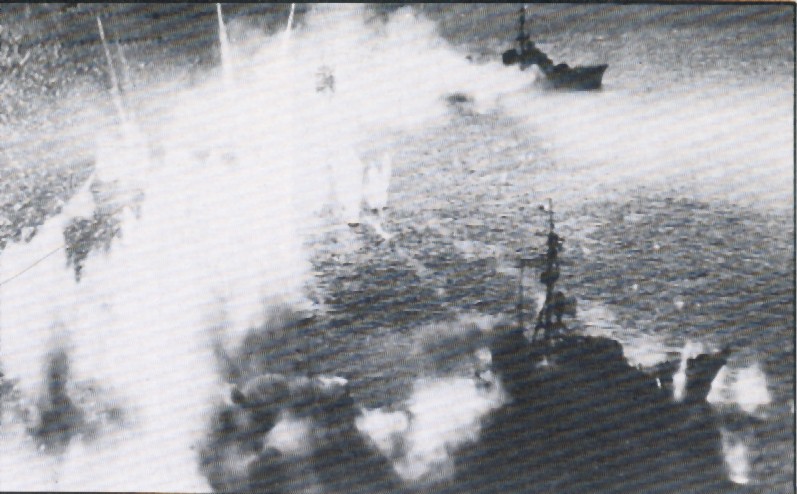
Z24 and T24 under aerial attack on 25 August 1944. A good way to show that German TBs ended often in the same escort missions as destroyers despite their obvious limitations.
German torpedo boats were administratively grouped into several torpedo-boat flotillas (TBFs).
| Flotilla | Formed | Assigned vessels | Primary Class |
|---|---|---|---|
| 1. Torpedobootsflottille | 1935 | T1, T2, T3, T4, T9, T10 | Type 35 torpedo boat |
| 2. Torpedobootsflottille | T5, T6, T7, T8, T11, T12 | ||
| 3. Torpedobootsflottille | 1937 | T13, T14, T15, T16, T17, T18, T19, T20, T21 | Type 37 torpedo boat |
| 4. Torpedobootsflottille | T22, T23, T24, T25, T26, T27 | Elbing-class torpedo boat | |
| 5. Torpedobootsflottille | 1938 | TB Albatross, TB Greif, TB Falke, TB Kondor, TB Möwe | Type 23 torpedo boat |
| TB Tiger (ex-Thor) | Sleipner-class destroyer | ||
| T34, T35, T36 | Elbing-class torpedo boat | ||
| 6. Torpedobootsflottille | 1937 | T28, T29, T30, T31, T32, T33 | |
| 7. Torpedobootsflottille | 1940 | TB Panther (Ex-Odin), TB Löwe (ex-Gyller) | Sleipner-class destroyer |
| TB Leopard | Type 24 torpedo boat | ||
| 9. Torpedobootsflottille | 1943 | TA14, TA15, TA16, TA17, TA18, TA19, TA37, TA38, TA39 | Torpedoboot Ausland |
| 10. Torpedobootsflottille | 1944 | TA23, TA24, TA27, TA28, TA29, TA30, TA31, TA32, TA33 |
As for tactics, operational examples shows some clues on how they were used. In the interwar, they were supposed to enemy communication lines and avoid combat in which classic destroyers were at ease. The latter indeed were assigned to the fleet as escorts with the task of deterring other destroyers or cruisers. Thus, TBs were dispensed on paper of these fleet escorting and screening tasks, having neither the range or armament to face enemy destroyers. Oustide preying on enemy trade in relative proxmity, they were to be used for escorting convoys as they did during the early phase of the war, off Poland and Norway. Each flotilla could be used as an entire entity, but in reality they were spread in wartime and depending of assignations.
The 1935/1937 Type had only a single aft gun, giving clues that they were supposed to arrive fast, and in a stealthy way, launch a full torpedo broadside and retreat under enemy fire, again possibly under smoke. The 1939/41 types were more rounded with artillery and AA and thus were closer to “substitute destroyers” in their roles, with tactics closer to standard destroyers flotillas.
In wartime indeed they were tasked of the following:
-Escort: Troopship or transport convoys but also fleet escort (ie with destroyers, of cruisers and even capital ships) in many occasions and for relatively short trips.
-Minelaying: Not only they replaced destroyers when escorting minelayers and participating themselves in minelaying operations.
-Attack: They rarely had the occasion of preting on allied lines of communications but in the gulf of gascony and channel, and were only occasionally used in this role, such as the Normandy landing night raids. They were easy prey for patrolling allied destroyers.
-Evacuation: A last resort used forced by the events, notably Operation Hannibal in 1945.
Operations: Three examples
To illustrated the operating side, since space is lackng on this post to dwelve into the career of each and every of the 36 torpedo boats concerned (they were be seen in due time on individual class posts), here is three career examples, three picked-up among all those in service from three classes among the most remarkable ships to illustrate what their wartime career felt like. All in all, 12 (the totality) of the 1923/24 early types were lost in action during WW2. They were soon made “maids of all work” in the Kriesgmarine, and saw heavy action from the campaign of Norway (Albatros by fortified batteries of Olsofjord in 1940), Seeadler by MTBs, and the remainder by air raids. The 1924 type had more diverse fate: Collision, mine, torpedo (2), and air raids. The torpeding by British Submersibles of such shallow draft, fast vessels was no small feat.
As for the Type 1935 and 1937, the majority were sunk also by air raids, with a few suviving to end was Soviet and French reparations. The 1939 Type had a longer range and thus, could be operated on ports less under direct reach by the RAF. Three were claimed by German mines during a navigation error, two after a fatal encounter with British cruisers (Glasgow and Enteprise), one by cruisers and destroyers, one by Soviet MTBs, one mined and bombed. Those which survived were attributed to the US and Britain and soon handed over back to France and USSR, seeing some service in the 1950s after alterations.
Seeadler of the 1923 Type
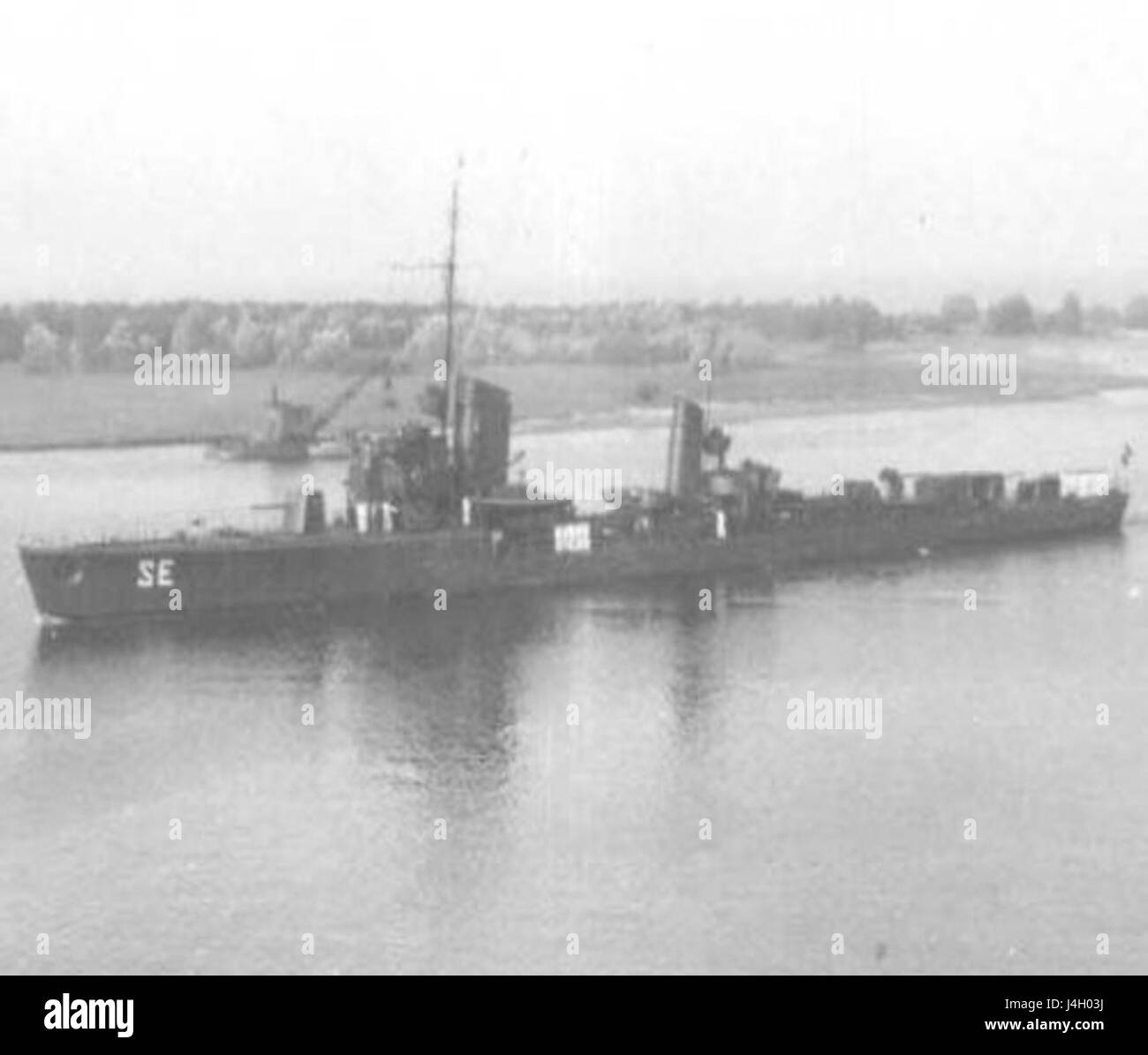
Leopard of the 1924 type. Can’t find any photo of Seeadler but this one on alamy.
KMS Leopard was commissioned on 15 May 1928. She spent her time with the baltic fleet, and by the end of 1936 served with the 2nd Torpedo Boat Flotilla, deployed off Spain during the Civil War. She ran aground while leaving Cadiz in November 1936 and was towed back for repairs by Albatros. KMS Deutschland was hit by two Republican aircraft bombs on 29 May 1937, abd Adolf Hitler ordered Admiral Scheer to shell Almería in retaliation and on 31 May, joined by the 2nd Flotilla, notably silencing coastal artillery by Seeadler and Albatros. In June 1938, she was transferred to the 4th TB Flotilla (TBF).
Her unit was disbanded in 1939, and she joined the 6th TBD escorting the North Sea mining operations from 3 September. On 13 and 18-19 November, escort by two light cruisers they escorted back destroyers off the English coast. They patrolled the Skagerrak, inspecting neutral shipping. In December, Seeadler and Jaguar controlled six ships. In retaliation for the loss of Altmark in neutral Norwegian waters on 16 February, Operation Nordmark was mounted and Seeadler searched for Allied merchant shipping in the North Sea, up to the Shetland Islands. The 2nd Destroyer Flotilla, Seeadler and Luchs escorted Scharnhorst and Gneisenau and the heavy cruiser Admiral Hipper on 18 February and returned to the Skaggerak.
She took part in the Invasion of Norway in April 1940, in Group 4 (Kapitän Friedrich Rieve), escorted KMS Karlsruhe, to Kristiansand., departing on 8 April, arriving in heavy fog. Coast-defense guns at Odderøya Fortress fired on Karlsruhe at 05:32 and Seeadler and Luchs returned fire. Rieve turned away under a smoke screen at 05:45 though. But soon He 111 bombers exploded an ammunition dump next to the fortress and Rieve came back at 05:55 to provide them better Accuracy, but he withdrew again at 06:23, then trying to bombard the fortress at long range from 06:50, ordering Seeadler and Luchs to take the narrows until stopped by the fog. Rieve withdrew for good at 07:30, and came back at 09:00 as the fog lifted but withdrew again. Troops were moved to four E-boats to storm the harbor and the Norwegians spotted the Seeadler and Luchs approaching with the four E-boats, reporting them, but mistaking them for Allied, failing to open fire, making the landing and occupation successful at 10:45.
Underway back to Kiel at 18:00 Karlruhe proceeded with Seeadler, Greif and Luchs when torpedoed by the ambushung British submarine HMS Truant. Luchs evaded the other nine torpedoes and tracked the launcher, depht-charging Truant for the next several hours with the other TBs. Truant was damaged but survived. Rieve ordered the TBs to evacuate his crew and Greif to finish off ship. Lützow being also hit by a British submarine on 11 April, the three TBs were soon there to assist her too. On 18 April, Seeadler, Möwe, Greif, Wolf escorted minelayers in the Kattegat. She was later refitted at Wesermünde in May-August and moved to a Frenche port, freshly acquired, assigned to the 5th Flotilla with Greif, Falke, Kondor. They started minelaying the English Channel on 30 September to 1 October. With Wolf and Jaguar, they sortied without results off the Isle of Wight on 8–9 October. In their 11–12 October sortie they sank two Free French submarine chasers, two British armed trawlers. The 5th Flotilla was moved to St. Nazaire and they laid a minefield off Dover (3–4 December) and the Channel (21–22 December).
With Iltis and the Z4 Richard Beitzen they escorted another minelaying mission at the northern entrance to the Channel (23–24 January 1941). After another refit in Rotterdam in March-May 1941 she returned to the Skagerrak, on convoy escort. She was again refitted in Rotterdam (Dec. 1941 – Feb. 1942) and assigned back to the 5th TBF., escorting Scharnhorst, Gneisenau, Prinz Eugen on 12 February 1942 off Cap Gris-Nez (Channel Dash). On 12 March – 2 April they escorted the first sortie of the commerce raider Michel through the Channel, fighting off HMS Walpole and Fernie on their way. They did the same for Stier (12-19 May) but this time met heavy opposition, and on 13th, British MTBs locked on Seeadler, which took at least twop torpedo hits and capsized, broke in tow, and went down with 85 of her crew.
T17 of the 1937 Type
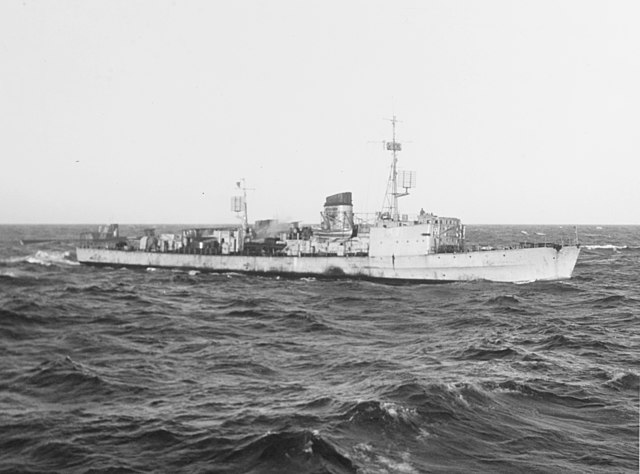
No cc photo for T17, here is T21 of the same class, being tested by by the British in July 1946.
T17 was built in Schichau, and commissioned on 28 August 1941, plagued by shortages of skilled labor and raw materials. After initial training and fixes in October she served in the Baltic, in convoy escort. In early 1942 she was moved to France, and on 12 February as part of the 2nd TBF (T2, T4, T5, T11, T12) and 3rd TBF (T13, T15, T16, T17) she met KMS Gneisenau and Scharnhorst, Prinz Eugen for the famous “Channel Dash” back to Germany. On 19-21 March, T17, T15, T16 were transferred to Norway, escorting Admiral Hipper to Trondheim. Later T17 was refitted refitted in Kiel. On 1–3 October she was in the Baltic escorting Scharnhorst, Leipzig and Nürnberg and Z25, Z31 and Z37 ad some of her sisters.
T17 On 20–21 August with T23 she escorted Prinz Eugen off Tukums, Latvia. She assisted the evacuation of Tallinn (Estonia) by mid-September 1944, and minelaying ops. in the Gulf of Finland. On 22 October with T23 she shelled Soviet positions near Sworbe, Saaremaa. On 19 November they did the same but had to fold up. In December she escorted the 6th Destroyer Flotilla (Z35, Z36 and Z43) to lay a new minefield off the Estonian coast. She herself laid 46 mines. The flotilla on the 11th encountered fould weather and Z35, Z36 due to poor visibility ended on “Nashorn” minefield, and sank. T28 came back and was refitted in Gotenhafen until December 1944. Next, she escorted Prinz Eugen with two destroyers and her sister T23 for a counterattack against Soviet forces near Cranz (29–30 January 1945). She also escorted Admiral Scheer with T23 and T35 off the East Prussian coast (2–5 February) to shell Soviet positions near Frauenburg and again on 9–10 February. She also escorted Lützow foing the same south of Danzig (27 March) and then escorted evacuation convoys from Hela. On 5 May she recued part of 45,000 refugees from East Prussia, evacuated to Denmark, the others in Glücksburg on the 9th. Conway’s all the worlds fighting ships 1922-46 (Sieche, Erwin (1980). “Germany”.) T23 on kbismarck.com/ Heller 1031 T 23 Torpedo boat Type 1939-class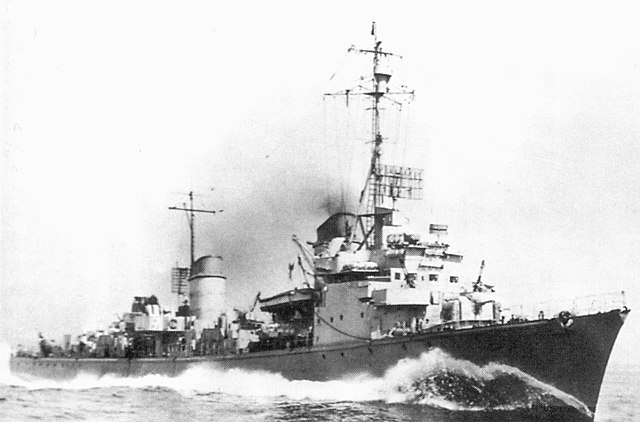
No cc photo for T28, here is T35 of the same class, being tested by the USN.
T28 was was built in Schichau, Elbing, commissioned on 19 June 1943. T28 and T29 were assitgned to Western France by late January 1944 and en route shelled by British coastal artillery and then two British Fairey Albacore. Near misses caused minor leaks in T28’s boiler room. She was refitted upon arrival until June. After the landings in Normandy on the 6th, theur unit, the 5th Torpedo Boat Flotilla (T28, Falke, Jaguar, Möwe) based in Le Havre made several sorties against the armada, mostly by night to the allied air superiority. They rather targeted isolated Allied shipping. Over time they encountered many, launched 50 torpedoes and spent mich ammunition but only managed to sink the Norwegian destroyer HNoMS Svenner. T28 was submitted to a RAF night raid on 14/15 June (clamining Falke and Jaguar) but emerged victorious. On the night of 21/22 July with three E-boats she sailed from Le Havre to Boulogne and encountered on her way HMS Melbreak, but ultimately she went back to Germany on the 27th despite multiple allied attacks.
As a surviving ship she was allocated a war reparation vessel to the British by late 1945 and then retransferred to France on 4 February 1946, recommissioned as Le Lorrain. Overhauled in Cherbourg with a US radar and FCS, and 40mm Bofors guns installed, she was fully recommissioned in December 1949, escorting the Mediterranean Squadron from Toulon and later the ASW, ended her career as trials ship, stricken on 31 October 1955 and sold for BU.Read More
Books
Campbell, John (1985). Naval Weapons of World War II. Annapolis, Maryland: Naval Institute Press.
Friedman, Norman (1981). Naval Radar. London: Conway Maritime Press.
Gröner, Erich (1990). German Warships 1815–1945. Vol. 1: Major Surface Warships. NIP
Whitley, M. J. (2000). Destroyers of World War Two: An International Encyclopedia. London: Cassell & Co.
Whitley, M. J. (1991). German Destroyers of World War Two. NIP
Campbell, John (1985). Naval Weapons of World War II. Annapolis, Maryland: Naval Institute Press.
Colledge, J. J.; Warlow, Ben & Bush, Steve (2020). Ships of the Royal Navy: The Complete Record Seaforth Publishing
Saibène, Marc (2004). Les torpilleurs légers français 1937-1945. Marines.
Salou, Charles (2004). Les torpilleurs de 600 tW du type “la Melpomène” Collection Navires et Histoire des marines du monde, Lela Presse.
Whitley, M. J. (2000). Destroyers of World War Two: An International Encyclopedia. London: Cassell & Co.Links
type 23 on german-navy.de/
type 24 on german-navy.de/
on battleships-cruisers.co.uk
Torpedoboot Ausland
ZT107 on avalanchepress.com
TBs on navypedia.org
worldnavalships.com/
navweaps.com 10.5 cm L45 sk C32 gun
navweaps.com german Torpedoes
Type 23Type 24Type 35Type 37Type 39Type 40Type 41Type 44
On web.archive.org Melpomene TA9
surface flotillas of the Kriegsmarine
Torpedoboote Ausland german-navy.deModel Kits
NIKO MODEL 7110 German torpedo-boat type 24 JAGUAR 1940
1/700 Niko Models German torpedo-boat type 37 T18 1941
NIKO MODEL German torpedo-boat Type 35 – T1
Niko Model German torpedo-boat Type 39 – T35 1945 1:700
WSW Modellbau German Torpedoboot T-23 N° 700-22-04 | 1:700
T-Boote nomenclature
 T107 class (WWI)
T107 class (WWI)

The former G7 (T107) after her second reconstruction and modernization (pinterest).
In 1919, the Reichsmarine counted two series of old “destroyers” authorized in the entente classification. These twelve ships were the six former V1 class, 670 tonnes (1911) and the six of the G7 class, 660 tonnes (1912-13). Needless to say all post-1914 built HochseeTBs had been interned in Scapa Flow and/or distributed as war reparation to the entente nations and others. With the arrival of the Type 1923, the six boats of the V1 class were stricken in 1929 and kept as a reserve of parts to be cannibalized and keep the G7 group operational. With the 1924 Type in service, they were in turn reclassed as Torpedo boats, although all were assimilated as TBs anyway. The classification difference was only communicated to the armistice commission and retained by most authors de describe them.
As for proper “torpedo boats”, the Reichsmarine counted quite a disparate fleet of former destroyers (Hochsee TBs):
-T139-149 which were 1906-1907 533 tonnes models and T151 to T158 which were 558 tonnes. Due to their age, half were discarded before 1939.
T141 was retained for parts, BU 1933. T143,44,46,48,49 were discarded in 1927-28. T152 and 154 were discarded in 1928-31.
Next, there was a mix of assorted models of various types and tonnage: T168 (1911, 665t) stricken 1927, T175 (1910, 700t) stricken 1926. The T158, 190 and 196 were retained for service, as the smaller, older T139, T151, 153, 155-158.
For reasons of simplification, we will see in one swoop both T107 and T150 series will be seen here. The were World War I “torpedo boats” (Hochseetorpedoboote), technically in WWI assimilated to destroyers but classed in Germany still as large ocean-going TBs. They were still active in the interwar, and were modernized in the 1920s and 1930s. They were sent in auxiliary duties in 1939 but T107, T108, T110, T111 and T196 were still listed as active TBs. T151, T153, T155, T156, T157, T158 and T190 were rearmed by late 1939 and tooo, part in escort missions during the invasion of Poland and Norway and stayed active until Operation Hannibal, the east prussian evacuations.
T107 group: Former G7 type, they were reboilered in 1921-23, and underwent another major reconstruction in 1935-37 or later. They gained two modern 105mm/45, were lenghtened and displacement rose to 15%. They retained their prewar prefic letter related to their builders, V for AG Vulkan, S for Schichau, and G for Germaniawerft. In 1937 they were reclassified as “TB” properly with T-numbers. Precise information are had to get, as photos. If enough is found, they will be the object of a dedicated article.
T139 group: This is a highly artificial classfification as the ten boats kept active until 1939 and in WW2 were of various tonnage and capabilities (see above). They were modernized in Wilhelmshaven in the early 1920s, boilers changed, and had remodelled bridges and funnels layout. Again, if enough information is available, they will be the object of a dedicated post in the future. During their interwar carrer they were alternatively disarmed and rearmed, but used for auxiliary tasks. In 1927, T139 and 141 became the radio control ships “Pfeil” and “Blitz”. T153 became the rangefinder training ship Edward Jungmann in 1938.Apparently T151 and T156-57-58 and T196 were active, but T155, T175, T185 were in reserve in 1939. They all survived the war but T157 which hit a mine in 22 October 1943. T155 and 156 were scuttled in April and May 1945 due to the Soviet advance. T151, T153, T190 were attributed to the USA in 1945-46 and promtly scrapped. T158, 185 and 196 were attributed to the USSR. Same fate but T158 which became Prosorlivi in 1945 and was active for some time, and lated scrapped at an unknown date.
 Type 1923 (1924)
Type 1923 (1924)
Albatross, Falke, Greif, Kondor, Möwe, Seeadler
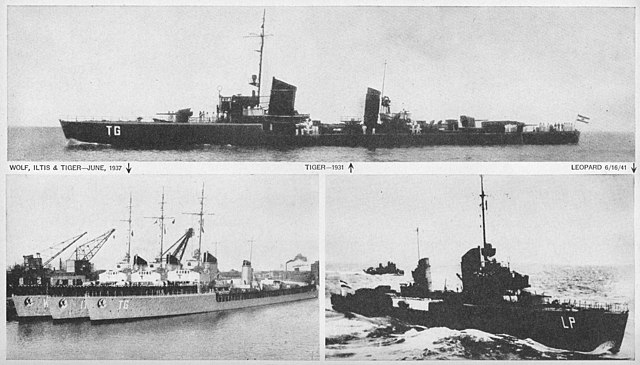
The six Type 23 torpedo boats (Raubvogel) were developed from 1918 unbuilt Hochsee TBs plans, unrealized and laid down as zerstörer (Destroyers) for the first time in the Riehchsmarine. The term reflected the Versailles treaty and Washington treaty classification to avoid confusion as Germany was specified to have twelve ships of each type, TB and Destroyers. Thus, the Reichsmarine built them to replace former Hochsee TBs that were themselves reclassed as “Torpedoboote”, helping to retire the WWI vintage TBs still in service. Thus two classes were ordered the Type 1923 and 1924, two batches of six to contitute a coherent twelve-ship destroyer force.
They entered service in 1926-1927. All built at Naval Dockyard at Wilhelmshaven, named and half launched the same day, leading to a grand ceremony. They were the also first to German ships built with the help of electrical welding, to reduce displacement. They were also the first with geared steam turbines. Indeed, even the models of destroyers planned in 1918 still had VTEs. Overall they were successful sea-boats, with good speed and agility, but based on such low tonnage, they were seen more as coastal ships, not on par with standard destroyers of the time and light away from large ones.
They mostly served with the 4th Torpedo Boat Half Flotilla and by 1936 and Albatros and Seeadler were in the 2nd TBF, Falke, Greif, Kondor, Möwe were in the 4th TBF, patrolling during the Spanish Civil War, especially after Deutschland was bombed by Republican aircraft in 1938, shelling Almería. In 1938 Seeadler joined the 4th Flotilla, Greif, Kondor and Möwe, the 5th TBF. The other were in refit at that time. WW2 was fierce for them: All supported the North Sea mining operations, they patrolled the Skagerrak, took part in 1940 to the Norwegian Operations, and they went on for various operations until 1944; notably mining the channel. All in all, Möwe was sunk by aviation on 16 June 1944, Falke too on 14/15 June, Greif on 24 May 1944, Kondor hit a mine on 23 May 1944, Albatros ran aground on 9 April 1940 and Seeadler was torpedoed by British MTBs on 13 May 1942.
Characteristics: (As built 1926)
Displacement: 798/923 long tons standard, 1,213/1,290 long tons FL
Dimensions: 87/87.7 x 8.25 x 3.65 m (287 ft 9 in x 27 ft 1 in x 12 ft) (o/a)
Propulsion: 2 shafts turbines, 3 × WT boilers, 23,000 shp (17,000 kW)
Speed: 32–34 knots (59–63 km/h; 37–39 mph)
Range: 1,800 nmi (3,300 km; 2,100 mi) at 17 kts
Crew: 127
Armament: 3× 10.5 cm (4.1 in), 2×3 500 mm (19.7 in) TTs, 30 mines
 Type 1924 (1926)
Type 1924 (1926)
Iltis, Jaguar, Leopard, Luchs, Tiger, Wolf
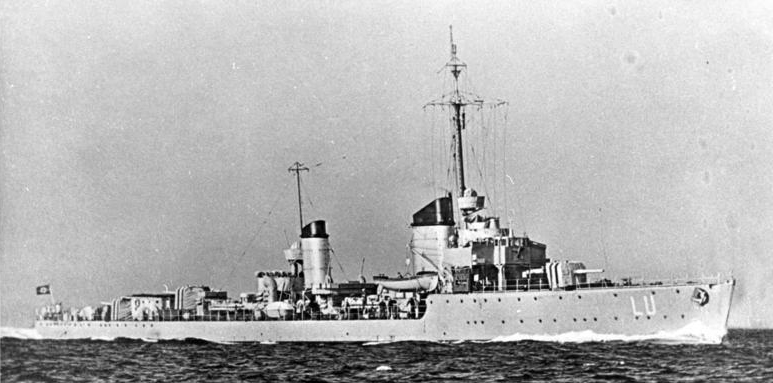
Six ships of 1924 Type “Raubtier” or “predator” class had been planned to carry the 12.7 cm (5-in) gun but instead went for the older 10.5 cm weapons. All were from the same Wilhelmshaven yard, but with speed and range improved but overall pretty close to the “Raubvogels” and upgraded in the late 1930s after entering service in 1927-1928. Like the former they had a lot of weather helm and thus “almost impossible to hold on course in wind at low speed”, and equipped with too many torpedoes for their role with the same six 50 cm (19.7 in) torpedo tubes in two triple mounts. Their AA was expanded, notably 20 mm guns in WW2, and by 1944 Jaguar received a FuMB 4 Sumatra radar detector and a proper Fumo surface radar.
Pushed hard they were all lost but one by mid-1942:
Wolf hit a mine on 8 January 1941, Iltis (Polecat) was sunk by British MTBs on 13 May 1942, Jaguar by aircraft on 14 June 1944, Leopard by collision with KMS Preussen on 30 April 1940, Luchs (Lynx) torpedoed by HMS Thames on 26 July 1940 and Tiger by collision with Z3 Max Schultz on 27 August 1939.
Displacement: 933 long tons standard, 1,320 long tons (1,340 t) FL
Dimensions: 92.6 x 8.65 x 3.52 m (303 ft 10 in x 28 ft 5 in x 11 ft 7 in)
Range: 1,997 nmi (3,698 km; 2,298 mi) at 17 knots
 Type 1935 (1938)
Type 1935 (1938)
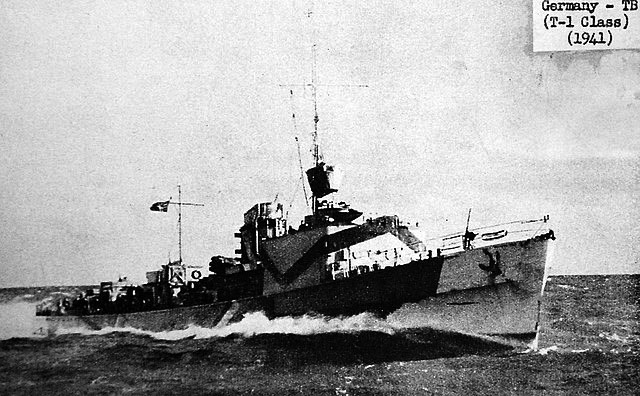
T-1, ONI
The Type 35 torpedo boat were the first modern type specifically as torpedo bootes, and despite being called Type 1935, they were completed a few months after the start of World War II and still training when the Norwegian Campaign commenced in April–June 1940. Design-wise, German authorities lied when reporting theior official tonnage, 600 standard. In reality they displaced 859 long tons (873 t) standard and 1,108 long tons (1,126 t) at deep load, but even more in 1944 with AA additions. Very different design compared to the Type 23/24 they had no forward artillery, just a single aft gun and two torpedo tubes banks of the larger 21-in cal. They were also flush deck with a large raked bow to deal with heavy weather, alrhough it proved not enough and many had their bows raised and sharpened, clipper-style. Engineers soon realized that it was impossible to stick on the 600 tonnes limit after the 1930 London Naval Treaty and it was decided to scrap the clause entirely.
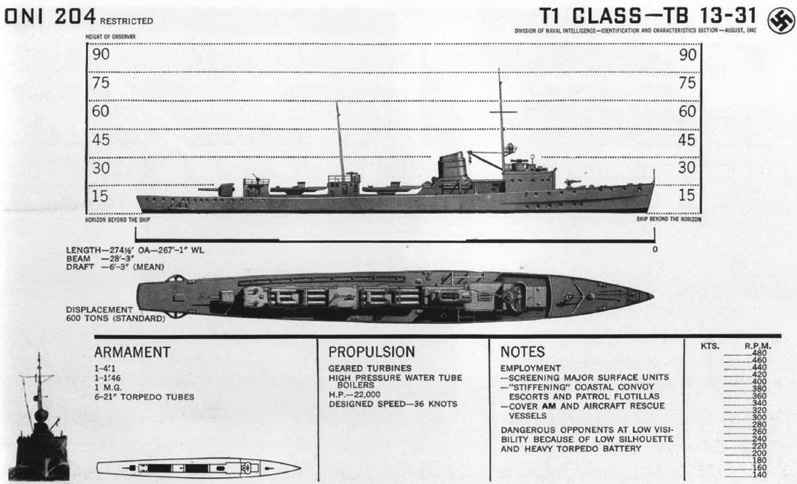
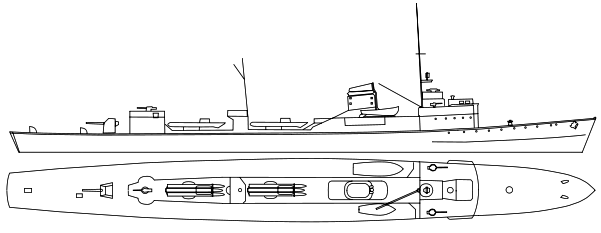
More so, the design was plagued by boilers issues to such a point that naval historian M. J. Whitley later stated “the whole concept, with the benefit of hindsight, must be considered a gross waste of men and materials, for these torpedo boats were rarely employed in their designed role.”. In all, twelve were built to replace older WWI units (T1-T12). The very last was commissioned on 4 july 1940. Nevertheless compared to previous ships they hhad one more boiler for more ouptut, better top speed, reduced crew and range.
They spent most their time escorting convoys and minelayers in North Sea, English Channel and later transferred to Norway trying to prey against shipping along the Scottish coast. Refitted in early 1941 they ended in the Baltic Sea to support operations from June. Four ended in reserve (manpower shortages) as well as in 1942, four were sent to France, escorting commerce raiders and later the “channel dash”. Two ended in the Torpedo School and the rest in 1943. Later in 1944 most were back in the Baltic. All in all, there were all sunk but three: T1 by aviation, 10 April 1945 as T2 (29 July 1944), T3 (19 September 1940), repaired, then mines, 14 March 1945, T4 (survived, Transferred US), T5 (mines 14 March 1945) T6 (same 7 November 1940), T7 (aircraft, 29 July 1944), T8 (same 3 May 1945), T9 (sunk 4 July 1940), T10 (aviation 19 December 1944), and T11 went UK and France, T12 to USSR, 1946.

T1 as the Type 1935 lead ship as completed.
Characteristics: (As built 1938)
Displacement: 859 long tons standard, 1,108 long tons FL
Dimensions: 84.3 x 8.62 x 2.83 m (276 ft 7 in x 28 ft 3 in x 9 ft 3 in)
Propulsion: 2 shafts turbines, 4× WT boilers, 31,000 shp (23,000 kW)
Speed: 35 knots (65 km/h; 40 mph)
Range: 1,200 nmi (2,200 km; 1,400 mi) at 19 kts
Crew: 119
Armament: 1× 10.5 cm (4.1 in), 1x 37mm, 2x 20mm, 2×3 500 mm (19.7 in) TTs, 60 mines
 Type 1937 (1940)
Type 1937 (1940)

T21 of the Type 1937 after the war
The Type 37 torpedo boat were only nine built, completed in 1941–1942 but the remaining were cancelled as the Type 39 was preferred at this point. Design wise they were virtually a repeat of the Type 35, better range, but the same troublesome boilers, assorted with maintenance issues exacerbated by poor access. They were commissioned qute late to participate to major operations and went on performing teh same tasks as the Type 35 boats like escorting commerce raiders, the “Channel Dash”, Operations from France, from Norway, from the Baltic, assignment to the Torpedo School. Those in Norway by early escorted vessels and off Francen they laid minefields. By 1944 some served as training ships and were pressed to support German forces in the Baltic. Five out of nine survived the war, ending as war reparations. The Soviet Union used its one was a test ship scrapped in 1960.

T13 in 1944
Characteristics: (As built 1940)
Displacement: 888 t standard, 1,139 t deep load
Dimensions: 85.2 x 8.87 x 2.83 m (279 ft 6 in x 29 ft 1 in x 9 ft 2 in)
Range: 1,600 nmi (3,000 km; 1,800 mi) at 19 kts
 Type 1939 (1941-42)
Type 1939 (1941-42)
T22 to T-36: 15 TBs
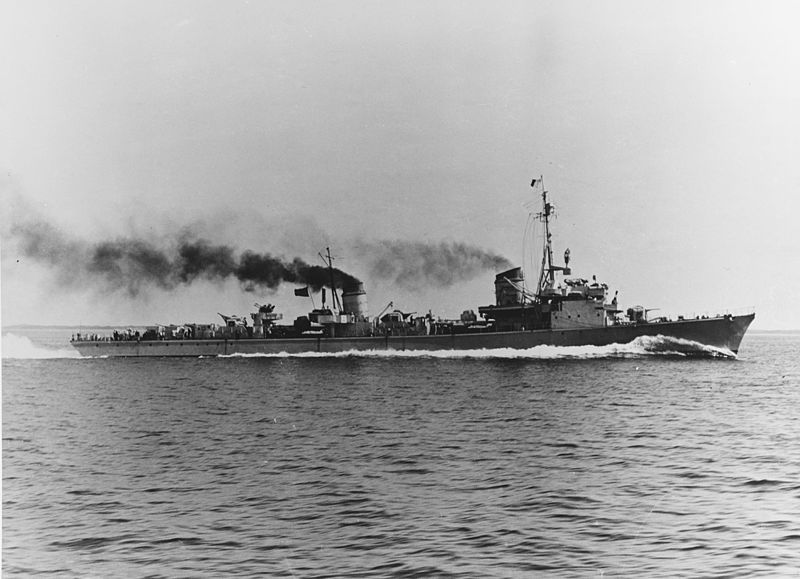
T35 as DD 395 in US tests, August 1945
Großadmiral Erich Raeder, Kriegsmarine’s CiC saw the proposed Type 1938B-class destroyer in 1939 as too small for effective use and instead proposed a 1,265 tons 311 feet all-purpose torpedo boat instead. The new design was evaluated on 8 July and by September the Kriegsmarine, caught off-guard at the start of Plan Z, was forced to re-evaluate the whole shipbuilding program. The Type 1938B was definitely cancelled, more Type 1936A-class destroyers ordered as the Type 39 TBs. The latter represented a drastic leap forward in design, much larger and better armed than the puny Type 35/37 that still tried to “stick” to treaty limits.
The Type 39 was a properly designed torpedo boat with full features, adding to thier initial torpedo attack role, better escort and attack capabilities due to their large artillery, and better range due to a tonnage almost twice as large as treaty limits (from 600 to 1,300 tonnes). They however still share the same troubesome high-pressure boilers but their new propulsion machinery was separated in two widely spaced compartment to avoid a single hit any crippling effect, compounded by the addition of 13 watertight compartments and a double bottom covering 67–69% of their length. Their survivability increased thus several folds.
With a 336 ft 3 in long by 32 ft 10 in wide hull, 1,780 metric tons (1,750 long tons) fully loaded, increased height clipper bow, this time the new TBs were soon reputed excellent seaboats, very maneuverable in stark contrast of their precedessors. However they needed a larger crew, with 206 officers and sailors and in wartime, previous Type 35/37 were often placed in reserve due to manpower issue, the Kriegsmarine preferring reaffecting them to the new Type 39.
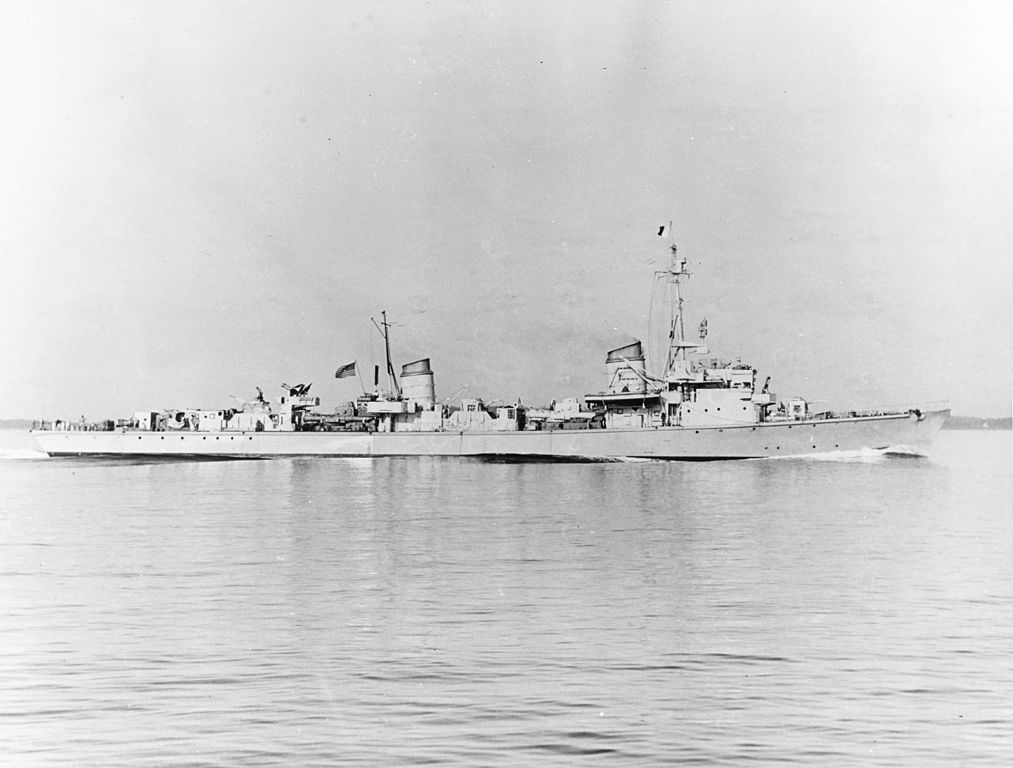
T35 in USN trials of Boston, September 1945
The Type 39 ships’s Wagner geared steam turbines, connected to three-bladed 2.5-meter (8 ft 2 in) propellers were fed by four Wagner water-tube boilers working at 70 kg/cm2 (6,865 kPa; 996 psi), 460 °C (860 °F) for 32,000 shaft horsepower (24,000 kW), reaching 33.5 knots (62.0 km/h; 38.6 mph). In service however steam consumption of the auxiliary machinery proved excessive, boilers failing to aise enough steam and lowering their top speed in practice (in moderate load and perfect weather, to 31 knots) their range also went from 2,300 to just 2,085 nmi (3,861 km; 2,399 mi) at the same 19 knots.
Armament-wise, they were a leap forward compared to the weak Type 35/37: Four 10.5 cm (4.1 in) guns instead of just one, and better AA (two twin 3.7 cm (1.5 in) and Fmakvierling and two single 2 cm (0.8 in)), but keeping the same two triple 533 mm (21 in) torpedo tubes. They could aso carry twice as many mines upt to 60 and for the first time, introduced four depth charge launchers to better perform their ASW escort role. This was completed by a S-Gerät sonar and FuMO 21 search radar from completion. They were started in Schichau, Elbing in 1940-4
and for that reason were almso called te “Elbing class”.
In wartime, they arrived late, at a time losses for the Kriegsmarine had been high: T22, the lead vessel, was commissioned in February 1942 but production issues delayed the others: T36 was only completed on 9 December 1944 and could do little at that stage. Apart T27 which ran aground in 1944 and T23, 28, 33 and 35 attributed respectively to France(2), USSR and USA, they were all sunk by aviation, mines, gunfire and torpedo. This class as the others will be covered on detail in a dedicated post in the future, including notably full careers.

Rendition of the Type 39, T25
Conways profile of T37, Type 1939
Characteristics: (As built 1938)
Displacement: 859 long tons standard, 1,108 long tons FL
Dimensions: 84.3 x 8.62 x 2.83 m (276 ft 7 in x 28 ft 3 in x 9 ft 3 in)
Propulsion: 2 shafts turbines, 4× WT boilers, 31,000 shp (23,000 kW)
Speed: 35 knots (65 km/h; 40 mph)
Range: 1,200 nmi (2,200 km; 1,400 mi) at 19 kts
Crew: 119
Armament: 1× 10.5 cm (4.1 in), 1x 37mm, 2x 20mm, 2×3 500 mm (19.7 in) TTs, 60 mines
 Type 1940 (1944)
Type 1940 (1944)

Rendition of the Type 1940 (conways)
“The Type 1940 torpedo boats were a group of 24 torpedo boats that were intended to be built for Germany’s Kriegsmarine during World War II. Although classed as fleet torpedo boats (Flottentorpedoboot) by the Germans, they were comparable to contemporary large destroyers. They were designed around surplus Dutch propulsion machinery available after the Germans conquered the Netherlands in May 1940 and were to be built in Dutch shipyards. Hampered by uncooperative Dutch workers and material shortages, none of the ships were completed before the Allies invaded Normandy (Operation Neptune) on June 1944. The Germans towed the three ships that were most complete to Germany to be finished, but one was sunk en route by Allied fighter-bombers and no further work was done of the pair that did arrive successfully. The remaining ships in the Netherlands were later broken up for scrap and the two that reached Germany were scuttled in 1946.”
Characteristics: (As built 1938)
Displacement: 859 long tons standard, 1,108 long tons FL
Dimensions: 84.3 x 8.62 x 2.83 m (276 ft 7 in x 28 ft 3 in x 9 ft 3 in)
Propulsion: 2 shafts turbines, 4× WT boilers, 31,000 shp (23,000 kW)
Speed: 35 knots (65 km/h; 40 mph)
Range: 1,200 nmi (2,200 km; 1,400 mi) at 19 kts
Crew: 119
Armament: 1× 10.5 cm (4.1 in), 1x 37mm, 2x 20mm, 2×3 500 mm (19.7 in) TTs, 60 mines
 Type 1941 (1944)
Type 1941 (1944)
T37 to T50: 14 boats planned, 5 to 96% complete.

T37 of the Type 1941 (conways)
In September 1939 the war caused the cancellation the bulk of Type 39 torpedo boats orders, with only 15 retained. Labor and material shortages also hampered their construction which dragged on until really starting by 1941. To compensate for the destroyers losses and spare strategic materials and labour time, the Kriesgmarine championed the idea in 1941 on a slightly enlarged Type 39 with an improvedmore propulsion machinery to reclaim 34 knots and more space to accomodate extra 3.7-centimeter (1.5 in) AA twin mounts.
In the end, the new Type 1941 reached 106 meters (347 ft 9 in) long for a 10.7 meters (35 ft 1 in) beam and 1,493/2,155 long tons displacement. They also had widely separated machinery spaces and 13 watertight compartments, 69% long double bottom. Using the same Wagner geared steam turbines and water-tube boilers they reached 40,000 shp (instead of 32,000) and carried 559 metric tons of fuel oil for 2,800 nautical miles. This was considered not good enough to replace destroyers and Schichau started work on an electric auxliary machinery, that was planned for the Type 1944, reaching 4,200 nm this time.
The main armament was essentially the same as the former Type 39, with four single 10.5 cm (4.1 in) guns (Although the KM44 dual purpose was planned to replace these), twin 3.7 cm a quadruple and two single 2 cm AA, same two triple torpedo tubes banks and four depth charge launchers. They also were to be fitted with the same S-Gërat sonar, but also the FuMO 21 radar, FuMB7 “Naxos” plus FuMB8 “Wanz G” radar detectors. Construction was postponed at Schichau until the first were laid down in October 1943, Fabruary and June 1944 and in 1945. None was completed. When captured by the allies, hulls were between 5% (T50) and 96.5% for T37, the lead boat. T38 and 39 were 84 and 76% respectively, both captured and scuttled by the British in 1946 while T37 went to the US for evaluation, in 1946. All the remainder were demolished on slipway but T40 that was launched and towed while in completion, accidentally ran aground on 12 March 1945, and was later scuttled by the British Forces.
Characteristics: (As planned 1945)
Displacement: 1,493t standard, 2,155t deep load
Dimensions: 106 x 10.7 x 3.72 m (348 x 35 x 12 ft)
Propulsion: 2 shafts turbines, 4× WT boilers, 40,000 shp (30,000 kW)
Speed: 34 knots (63 km/h; 39 mph)
Range: 2,800 nmi (5,200 km; 3,200 mi) at 19 knots
Crew: 210
Armament: 1× 10.5 cm (4.1 in), 3×2 37mm, 8x 20mm, 2×3 500 mm (19.7 in) TTs, 4 DCT
 Type 1944 (1944)
Type 1944 (1944)
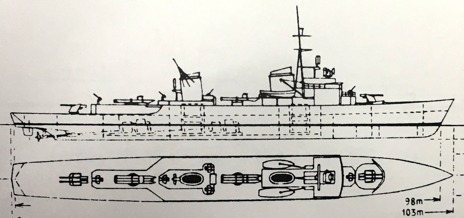
T52 of the Type 44 as planned. It looked more compact and bulky than previous designs, more destroyer-like.
As the previous Type 39 torpedo boats, the Type 44s were general-purpose TBs, but improved over steam consumption of the Type 39′ auxiliary machinery. At the time, revolutionary three-phase electric motor which was found far more effective for a relatively small ship’s auxiliary machinery, partially automated to boot and fast-starting. Dipl.-Ing. Illies at Schichau-Werke’s shipyard, Elbing (East Prussia) which worked on this programme, had it ready for tests in 1942 and trialled connect with a single boiler, plus full-size mockups of turbine-boiler rooms were made for demonstrations. The Kriegsmarine’s staff however doubted the “Illies-Schichau” machinery would be ready before 1944 and so the Type 44 was designed with alternative powerplants in mind.
The hull was about the same as the Type 39, 103 meters (337 ft 11 in) long for 10.1 meters (33 ft 2 in) so a bit larger, and displacing 100 tonnes more at 1,418 long tons (1,441 t) standard, a protection including 12 watertight compartments, double bottom on 70%. Eventually two sets of Wagner geared steam turbines and four Wagner water-tube boilers were chosen, improved and producing 52,000 shaft horsepower (39,000 kW) versus 32,000 on the Type 39. This enabled the far more respectable top speed of 37 knots. This 300 metric tons of fuel oil aboard they also reached 4,500 nautical miles (8,300 km; 5,200 mi) at 19 knots, better than any destroyers of the time. The auxiliary intended electric machinery however only reached 25 knots but greatly increasing the range.
The planned main armament was essentually the same as the Type 39 but with KM44 dual-purpose guns in two twin-gun mounts instead of three singles. It was completed by an AA director on the bridge’s roof and a comfortable AA overall with no less than ten 3.7-centimeter in five twin mounts (with reserve to add Flakvierling or 20 mm quad mounts) and the same 533-mm banks amidships plus rails for 30 mines. This was quite an improvement over the Type 39, however at that stage, the nine Type 44s (T52–T60) ordered from Schichau on 28 March 1944 (yard n° 1720–1745 and 1447–1449) were scheduled for completion on 15 September 1946, but the fall of east Prussia to Soviet forces in January 1945 cancelled the facto these plans with little work done.
Characteristics: (As planned 1945)
Displacement: 1,418 long tons standard, 1,794 long tons FL
Dimensions: 103 x 10.1 x 3.7m (337 x 33 12 ft 2 in)
Propulsion: 2 shafts turbines, 4× WT boilers, 2 elec. mot. 52,000 shp (39,000 kW)
Speed: 37 knots (69 km/h; 43 mph)
Range: 4,500 nmi (8,300 km; 5,200 mi) at 19 kts
Crew: 222
Armament: 2×2 10.5 cm, 5×2 37mm, 2×3 533 mm TTs, 30 mines
Torpedoboot Ausland
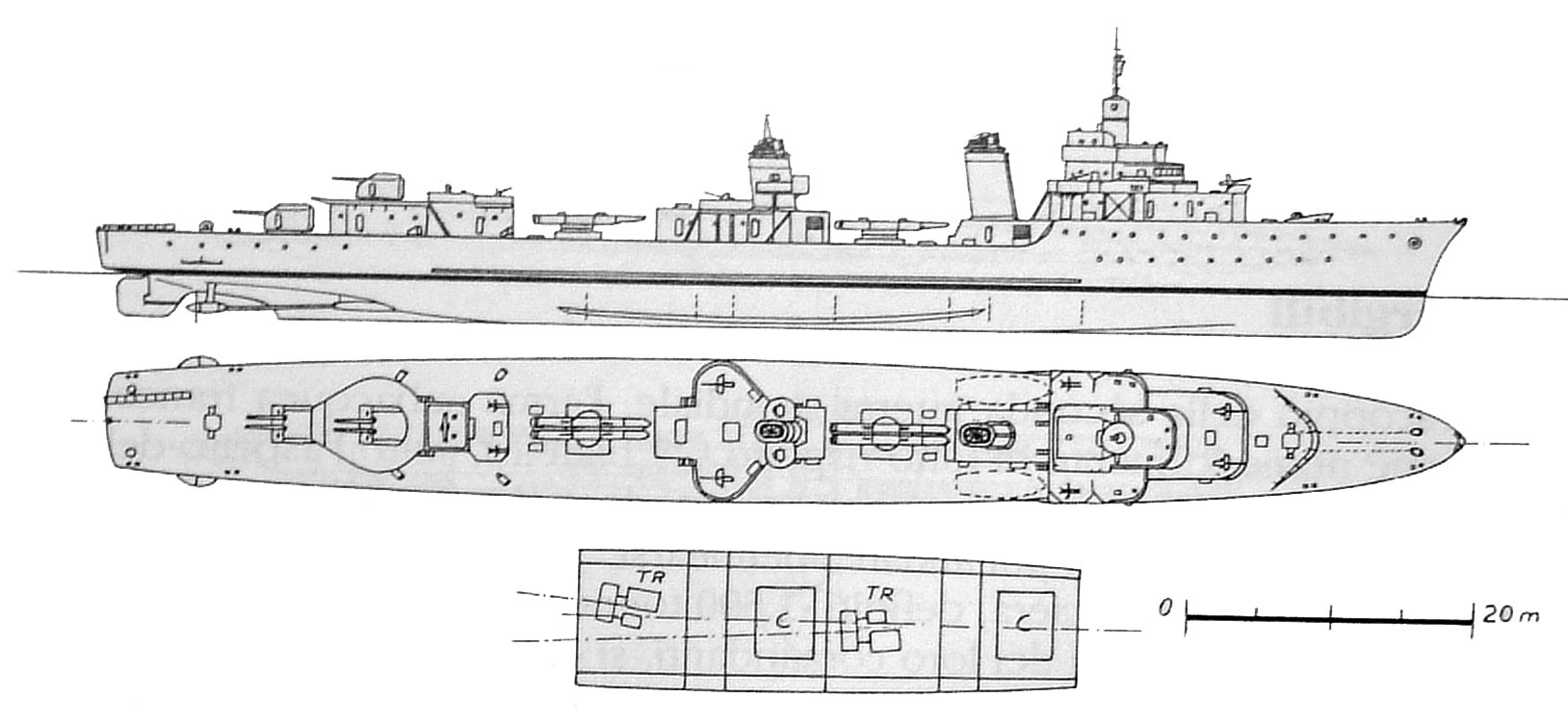
Le Fier class plans (later TA 1 class). Original, not German modified.
36 completed torpedo boats was not a lot to be sure, less than Italy, a droplet compared to the mass of escort destroyers built by US yards. But fortunately for the Kriegsmarine, the real estate area captured in 1940 provided a wealth of yards, and ships at anchor, under construction or completion which could be pressed into the Kriegsmarine. And in WW2 this force was nothing less than considerable, albeit very disparate to say the least: 49, so far more than “regular” torpedo boats, from which part were not even built in German Yards but in the Netherlands (12 in all):
They were not given the usual prefix “T-” but “TA-” for “Torpedoboot Ausland”, literrally “foreign torpedo boats”. The Kriegsmarine’s list went for TA-1 to TA-49, in order of capture. The paradox was that the first series were ex-French and Norwegian vessels never completed while the bulk of later series were ex-Italian vessels captured in late 1943.
Here is a review of these cases, class by class:
 TA-1 class (French Le Fier, 1940)
TA-1 class (French Le Fier, 1940)
The Le Fier class were sea-going torpedo boats laid down in 1940, they were incomplete at the fall of France. The shipyards were sized in June 1940, and Le Fier, L’Agile, L’Entreprenant, Le Farouche, L’Alsacien, and Le Corse were examined for completion to German standards. Le Breton was scrapped, seven others cancelled. The remaining ones were completed and modified with revised specifications by the Kriegsmarine as TA1-TA6. See the tables for the final specs.
Displacement was increased but dimensions were shrunk a bit (see the tables below), engines and propulsion remained the same, with full power reduced but they were rearmed with three 10.5 cm SK C/32 naval guns, two 3.7 cm SK C/30, nine 2 cm SK c/38 guns (Flakvierling + 5 single) and two triple 533 mm (21.0 in) G7 torpedo tubes. Work under German supervision was limited by material shortages and French sabotage and they never reached completion in 1945. By April 1943 already, efforts were concentrated to complete TA1 and TA4, using cannibalized parts. TA2 and TA4 were sunk by USAF aviation, refloated but work stopped after the Normandy landings. They were scuttled on 11 August 1944. For the anecdote the Spanish Audaz-class reused German plans and documents for these.
Characteristics: (As planned for 1944-45)
Displacement: 1,087 tons standard, 1,443 tons FL*
Dimensions: 93.2 x 9.28 x 3.08 m (305.8 x 30.4 ft x 10.1 ft)**
Propulsion: 2 shafts turbines, 4× WT boilers, 28,000 bhp (20,900 kW)***
Speed: 34 knots (estimated)
Crew: 119
Armament: 3x 10.5 cm, 2x 37mm, 9x 20mm, 2×3 533mm TTs****
*Original 859 long tons standard, 1,108 long tons FL
**Original 84.3 x 8.62 x 2.83 m (276 ft 7 in x 28 ft 3 in x 9 ft 3 in)
***Original 31,000 shp (23,000 kW)
****1× 10.5 cm (4.1 in), 1x 37mm, 2x 20mm, 2×3 500 mm (19.7 in) TTs, 60 mines
 TA-7 class (Norwegian Sleipner, 1939)
TA-7 class (Norwegian Sleipner, 1939)
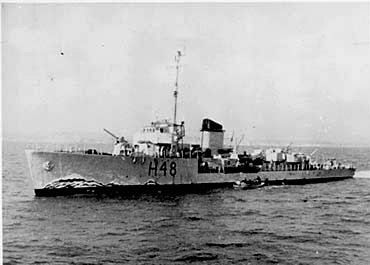
The Sleipner class were six Norwegian destroyers built from 1936, but not completed during the German invasion in 1940. Theu used aluminium bridges and superstructure, mast and funnel. Hull in extra strength special steel. Good main guns, AA artillery ASW weapons. Æger was bombed by German planes on 9 April 1940. Sleipner took refuge in UK, served with the Free Norwegian Navy. Gyller and Odin were captured by the Germans in 1940 at Kristiansand. Balder and Tor were captured uncomplete in the shipyard, complete by the Germans. They were used until 1945 as Torpedoboot Ausland as Löwe, Panther, Leopard, and Tiger. In 1945 Löwe escorted Wilhelm Gustloff whe she was was torpedoed, rescuing 472 passengers (worst sinking of all time).
https://en.wikipedia.org/wiki/Sleipner-class_destroyer
Characteristics: (As built 1938)
Displacement: 735 tons long tons standard
Dimensions: 74.30 x 7.80 x 4.15 m (243.77 x 25.59 x 13.62 ft)
Propulsion: 2 shafts De Laval turbines, 4 WT boilers, 12,500 shp (9,300 kW)
Speed: 32 knots (59.26 km/h)
Crew: 75
Armament: 3× 10 cm, 1x 40mm Bofors, 2x 12.7mm AA, 1×2 533 mm TTs, 4 DCT
 TA-9 class (Ex-French, La Melpomène)
TA-9 class (Ex-French, La Melpomène)
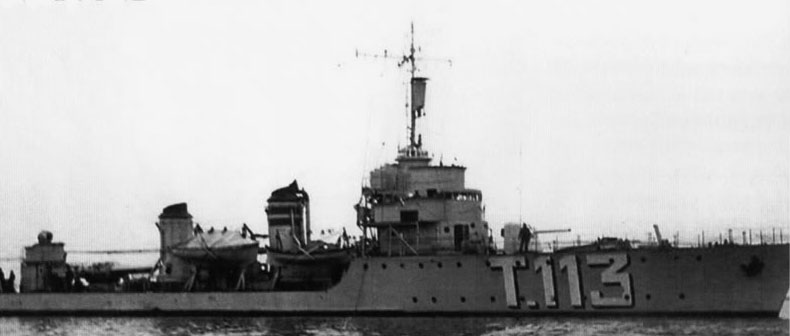
La Melpomène class were 12 French torpedo boats (1933-1935) in service with the Marine Nationale, which after the armistice passed onto the Vichy French Navy (some Free French Navy, Royal Navy and Royal Netherlands Navy). After the scuttling of Toulon, the Regia Marina ceized most of them, to refloat.
a Melpomène was in a British port in June 1940. After brief service with the Royal Navy, she was transferred into FNFL (Free French) service. In 1950 was sold for scrap.
-La Pomone was seized by the Italians at Bizerte in November 1942: FR42, then German TA10 in May 1943. Duelled with HMS Eclipse near Rhodes, badly damaged, scuttled on 27 September 1943.
-L’Iphigénie Seized by the Italians at Bizerte, FR43, German TA11 (May 43), sunk by Italian MAS at Piombino, 10 September 1943.
-La Bayonnaise scuttled in Toulon, raised by the Italians as FR44. Seized by the Germans, TA13. Scuttled on 23 August 1944.
-Bombarde seized by the Italians at Bizerte, FR41 from September 1943 renamed TA9. Snk by aircraft off Toulon, 23 August 1944.
-Baliste scuttled in Toulon, raised by the Italians as FR45. German TA12, sunk by Allied aircraft on 22 August 1943.
Characteristics: (As built 1938)
Displacement: 610 tons standard, 834 tons full load
Dimensions: 81 x 10.5 x 2.65m (265 ft 9 in x 34 ft 5 in x 8 ft 8 in)
Propulsion: 2 shafts Geared turbines 4 boilers 33,000 shp (25,000 kW)
Speed: 34.5 knots (63.9 km/h; 39.7 mph)
Range: 1,200 nmi (2,200 km; 1,400 mi) at 19 kts
Crew: 8+94
Armament: 2× 10 cm, 2x 37mm, 2x 13.2mm, 3x 550 mm TTs
 TA-14-49 class (Ex-Italian, various)
TA-14-49 class (Ex-Italian, various)
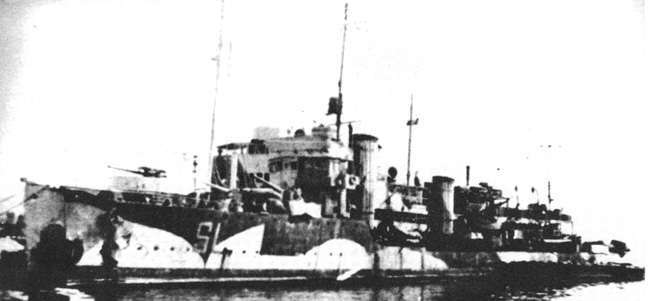
Solferino, of the Curtatone class in 1943, later TA 18 src
Curtatone class: TA16 class (ex-Castelfidardo), Achilles (ex-Calatafimi), TA15, TA19
TA16 had two twin 102/45 S-A M1919, four single Breda 20mm/65 M1939, 2×3 – 450mm TT, 16 mines. TA19: Twin 102mm/45 S-A M1919, One 102mm/45 S-A M1919, 5x 20mm/65 M1939, Twin 533mm TT, 16 mines captured in Aegean Sea in September, 1943. TA16 entered the Kriegsmarine on 14.11.1943, TA19 on 13.10.1943. By that time they reached 24kts and 600 at 12 nm.
By late 1943, triple 450mm TT; single 40mm/56 FlaK 28, Flakvierling C/38, single 20mm/65 M1939 or single 37/80 SK C/30. Both served in Aegean Sea. TA16 was damaged by British aircraft 31.5.1944, fore end was broken off, 2.6.1944 she was lost at Heraklion (Crete) as a result of explosion on s/s Gertrud, attacked by British bombers. TA19 was damaged by missiles from British aircraft 19.6.1944 and was under repair 1 month, 9.8.1944 she was sunk by a torpedo from Greek submarine Pipinos at Samos.
The full list (a dedicated article will be done on these ex-Italian Torpedoboote Ausland(i) for “Italien”).
TA14 (1927) 28.10.1943 in German service, sunk 15.09.1944
TA15 (1925), 30.10.1943, sunk 08.03.1944
TA16 (1922), 14.10.1943, sunk 02.06.1944
TA17 (1920), 28.10.1943, sunk 12.10.1944
TA18 (1920), 25.07.1944, sunk 19.10.1944
TA19 (1923), 19.09.1943, sunk 09.08.1944
TA20 (1915), 21.10.1943, sunk 01.11.1944
TA21 (1913), 08.11.1943, sunk 05.11.1944
TA22 (1915), 11.08.1944, blown up 03.05.1945
TA23 (1942) com. 17.10.1943, sunk 25.04.1944
TA24 (1943) com. 04.10.1943, sunk 18.03.1945
TA25 (1942) 16.01.1944, sunk 06.07.1944
TA26 (1943) com. 18.12.1943, sunk 15.07.1944
TA27 (1943) com. 28.12.1943, sunk 09.06.1944
TA28 (1943) com. 23.01.1944 sunk 04.09.1944
TA29 (1943) com. 06.03.1944, sunk 18.03.1945
TA30 (1943) com. 15.04.1944, sunk 15.06.1944
TA31 (1930) 17.06.1944 sunk 24.04.1945
TA32 (1931) 18.08.1944, destroyed 24.04.1945
TA33 (1942) destroyed 04.09.1944
TA34 (1916) 17.06.1944, sunk 24.06.1944
TA35 (1915) 09.06.1944, sunk 17.08.1944
TA36 (1943) sunk 18.03.1944
TA37 (1943) sunk 07.10.1944
TA38 (1943) scuttled 13.10.1944
TA39 (1943) sunk 16.10.1944
TA40 (1943) destroyed 04.05.1945
TA41 (1944) com. 07.09.1944, sunk 17.02.1945
TA42 (1944) com. 27.09.1944, sunk 21.03.1945
TA43 (1937) 22.02.1945, scuttled 01.05.1945
TA44 (1929) 14.10.1944, sunk 17.02.1945
TA45 (1944) comm. 08.09.1944, sunk 13.04.1945
TA46 (1944) comm. 20.02.1945
TA47 (1942) scrapped 1971
TA48 (1914) 16.10.1943 sunk 20.02.1945
TA49 (1937) comm. 01.01.1938, sunk 04.11.1944


 Latest Facebook Entry -
Latest Facebook Entry -  X(Tweeter) Naval Encyclopedia's deck archive
X(Tweeter) Naval Encyclopedia's deck archive Instagram (@navalencyc)
Instagram (@navalencyc)





 French Navy
French Navy Royal Navy
Royal Navy Russian Navy
Russian Navy Armada Espanola
Armada Espanola Austrian Navy
Austrian Navy K.u.K. Kriegsmarine
K.u.K. Kriegsmarine Dansk Marine
Dansk Marine Nautiko Hellenon
Nautiko Hellenon Koninklije Marine 1870
Koninklije Marine 1870 Marinha do Brasil
Marinha do Brasil Osmanlı Donanması
Osmanlı Donanması Marina Do Peru
Marina Do Peru Marinha do Portugal
Marinha do Portugal Regia Marina 1870
Regia Marina 1870 Nihhon Kaigun 1870
Nihhon Kaigun 1870 Preußische Marine 1870
Preußische Marine 1870 Russkiy Flot 1870
Russkiy Flot 1870 Svenska marinen
Svenska marinen Søværnet
Søværnet Union Navy
Union Navy Confederate Navy
Confederate Navy Armada de Argentina
Armada de Argentina Imperial Chinese Navy
Imperial Chinese Navy Marinha do Portugal
Marinha do Portugal Mexico
Mexico Kaiserliche Marine
Kaiserliche Marine 1898 US Navy
1898 US Navy Sovietskiy Flot
Sovietskiy Flot Royal Canadian Navy
Royal Canadian Navy Royal Australian Navy
Royal Australian Navy RNZN Fleet
RNZN Fleet Chinese Navy 1937
Chinese Navy 1937 Kriegsmarine
Kriegsmarine Chilean Navy
Chilean Navy Danish Navy
Danish Navy Finnish Navy
Finnish Navy Hellenic Navy
Hellenic Navy Polish Navy
Polish Navy Romanian Navy
Romanian Navy Turkish Navy
Turkish Navy Royal Yugoslav Navy
Royal Yugoslav Navy Royal Thai Navy
Royal Thai Navy Minor Navies
Minor Navies Albania
Albania Austria
Austria Belgium
Belgium Columbia
Columbia Costa Rica
Costa Rica Cuba
Cuba Czechoslovakia
Czechoslovakia Dominican Republic
Dominican Republic Haiti
Haiti Hungary
Hungary Honduras
Honduras Estonia
Estonia Iceland
Iceland Eire
Eire Equador
Equador Iran
Iran Iraq
Iraq Latvia
Latvia Liberia
Liberia Lithuania
Lithuania Mandchukuo
Mandchukuo Morocco
Morocco Nicaragua
Nicaragua Persia
Persia San Salvador
San Salvador Sarawak
Sarawak Uruguay
Uruguay Venezuela
Venezuela Zanzibar
Zanzibar Warsaw Pact Navies
Warsaw Pact Navies Bulgaria
Bulgaria Hungary
Hungary

 Bundesmarine
Bundesmarine Dutch Navy
Dutch Navy Hellenic Navy
Hellenic Navy Marina Militare
Marina Militare Yugoslav Navy
Yugoslav Navy Chinese Navy
Chinese Navy Indian Navy
Indian Navy Indonesian Navy
Indonesian Navy JMSDF
JMSDF North Korean Navy
North Korean Navy Pakistani Navy
Pakistani Navy Philippines Navy
Philippines Navy ROKN
ROKN Rep. of Singapore Navy
Rep. of Singapore Navy Taiwanese Navy
Taiwanese Navy IDF Navy
IDF Navy Saudi Navy
Saudi Navy Royal New Zealand Navy
Royal New Zealand Navy Egyptian Navy
Egyptian Navy South African Navy
South African Navy






























 Ukrainian Navy
Ukrainian Navy dbodesign
dbodesign